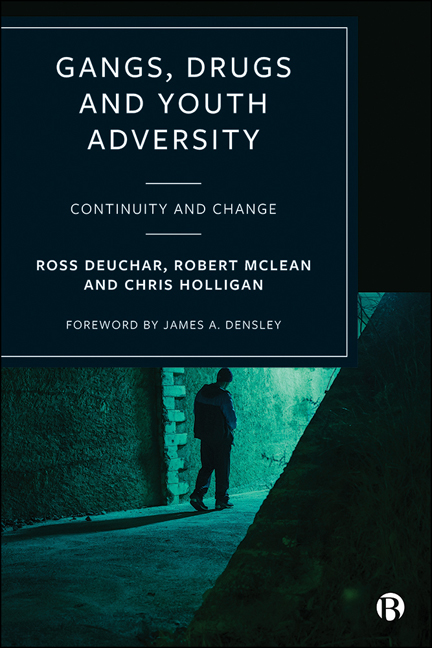Book contents
Appendix: Geographical Areas and Socio-economic Profiles
Published online by Cambridge University Press: 13 May 2022
Summary
Glasgow city districts and suburbs
Note: all geographical areas have been given pseudonyms.
Ashbank is a mainly residential district in Glasgow's east end. It has recently been subject to gentrification with many of the existing three- and four-story tenements being refurbished rather than being replaced by highrise flat developments as has happened in nearby areas. Its population is around 11,000. Male and female life expectancy is lower than the Glasgow average, with 40 per cent of children living in poverty. One-fifth of young people are not in education, training or employment (GIP, 2021).
Birchend is a district situated to the north of the River Clyde, with a population of just over 10,000. Historically, its main source of employment came from a prominent foundry company that was the biggest manufacturer of ornamental ironwork in Scotland. Since its closure in the late 1960s, Birchend has become one of the poorest areas in the UK, and also has high crime rates and levels of drug addiction. It has been reported that the area has the lowest life expectancy of all neighbourhoods in Glasgow and the proportion of children living in poverty is considerably higher than the city's average (GIP, 2021).
Elderland, an inner-city district in the north of Glasgow, has a population of around 12,000, consisting of predominantly working-class households. Male and female life expectancy is below that of other parts of Glasgow, and it has high numbers of unemployment benefit claimants. Almost 20 per cent of young people are not in education, training or employment, and child poverty is almost 50 per cent (GIP, 2021). Its economic development has strong historical links to heavy industrial manufacturing, especially in railways and locomotives. During the 1970s and ‘80s, under Glasgow's Comprehensive Development Areas initiative, most of its housing areas were demolished and replaced by sequences of new housing estates, through which a major road carriageway was developed (Paice, 2008). The vision of regeneration being unsuccessful led to the district's housing falling into decay and a lack of major employers. Poverty, crime and drug addiction have impacted the district for decades. In 2012, the Scottish Government's (2012) SIMD analysis identified it as the third most deprived area in Scotland.
- Type
- Chapter
- Information
- Gangs, Drugs and Youth AdversityContinuity and Change, pp. 147 - 150Publisher: Bristol University PressPrint publication year: 2021



